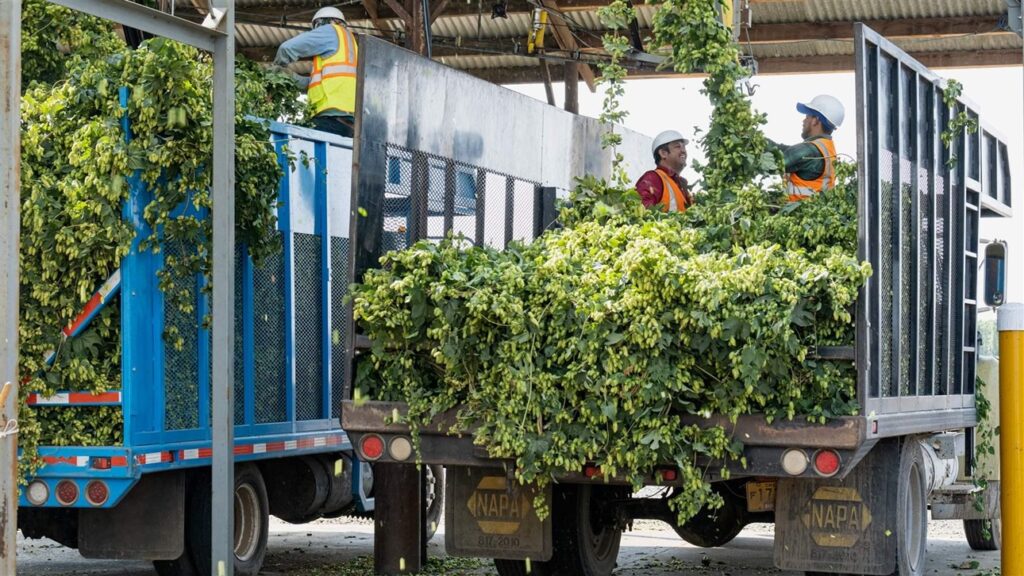Oregon companies suffering under Trump tariffs, consumers next, business leaders tell governor
Published 6:21 am Thursday, April 17, 2025
Portland-based clothing company Wildfang received a shipment from China right before President Donald Trump announced a 152.5% tariff on all Chinese goods.
If that order had gone through just 48 hours later than it did, it would have cost Wildfang nearly $180,000 extra because of Trump’s tariffs, CEO Emma Mcilroy told Gov. Tina Kotek during a roundtable at Salem’s Chemeketa Community College on Wednesday.
“We believe manufacturers our size are going to go under,” Mcilroy said.
She joined fishermen, clothing and food manufacturers, winemakers and drink distributors in describing the extraordinary costs Oregon’s small and medium-sized companies now face to import essential products for their businesses.
Many of the businesses have paid millions on imports since April 9, they told Kotek, when Trump issued a 10% import tariff on nearly all goods coming into the U.S.
For other Oregon businesses, it’s retaliatory tariffs that could sink the ships.
European Union leaders recently added a 25% tariff on Oregon shrimp to a list of retaliatory tariffs against the U.S. Nick Edwards, a lifelong shrimp fisherman out of Coos Bay, exports 50% of his catch, and nearly all of it goes to Danish buyers who are now looking elsewhere, he told Kotek.
Kotek called the information “sobering” and said the state was willing to work with businesses to come up with plans to respond to the chaotic federal changes.
“We are resilient. We are creative. We will think of some things,” she said.
Oregon consumers will pick up much of the tab for tariffs, according to federal and state economists.
Kotek was joined by State Treasurer Elizabeth Steiner, who said federal economists estimate Trump’s tariffs will cost the average U.S. household $3,800 more per year. The Treasury’s statewide “financial wellness scorecard” published in January found the average Oregon family does not have an extra $500 available to cover emergencies.
“If they can’t find $500 for an emergency, how will they find an additional $3,800 to pay for essentials?” she said.
Trey Winthrop, CEO of Bob’s Red Mill, based in Portland, confirmed that consumer prices would soon continue to rise.
“Our hand is being forced to pass some of these increases on to the American consumer, people already hurting the most with inflation through grocery prices,” he said.
Outlook from state economists
Oregon’s state economist, Carl Riccadonna, came to the roundtable with two major messages to share with businesses at the roundtable. The first was to take a survey from Business Oregon, the state’s economic development agency, so it can gather more information about tariff impacts.
“At economic turning points, the feedback from business is absolutely critical,” he said. “Whenever there is any shock to the economy — a hurricane, an earthquake, trade tensions — the first step is to evaluate the problem, collect the data. You can’t address the problem if you don’t understand the scope of the problem.”
Second, he said, is that the full impact of these tariffs on Oregon’s economy — measured by growth of new or existing businesses, increases in hiring and decreases in inflation — likely won’t be known until mid-summer. In the meantime, he said, the state is looking at historical changes that could paint a picture of what’s ahead.
Before Trump’s 2018 tariffs on steel, aluminum and other imported materials, Oregon’s economy was growing by about double the pace of the national economy, Riccadonna said. Following the tariffs, Oregon’s growing economy almost immediately shrunk by about 2.5 percentage points.
If the 10% tariff was in place last year, he said, Oregon businesses would have paid $7.4 billion in tariffs on $28.2 billion of imports.
The state is heavily dependent on trade and on manufacturing exports, according to Damon Runberg, an economist at Business Oregon. Oregon is the 20th biggest trade state in the U.S., he told the roundtable.
“That might not sound like a very high ranking, but we are the 26th largest economy. So relative to the size of our economy, trade is disproportionately important for us,” he said.
Other countries retaliate
Winthrop of Bob’s Red Mill, as well as drink distributors and wine industry representatives at the roundtable, described distress over the future of their Canadian markets. Bob’s Red Mill has been exporting to Canada for 25 years, Winthrop said.
Recently, a Canadian news program did a segment called “buy or bye,” he said, showing a litany of U.S.-made products next to Canadian alternatives. Bob’s Red Mill pancake mix was marked as “bye,” next to a Canadian brand marked “buy.”
“The message is very clear: Canadians should not be buying U.S. brands, and we’re seeing that impact,” he said. “I feel very strongly that once we have long-term clarity on the tariff situation, there will be lasting damage to our export market there, and we will not be able to sell our products to the country.”
Wine producers described orders being returned or terminated from Canadian sellers and Steve Gibbs, a lobbyist for Washington-based beverage distributor Columbia Distributing, said Canadians are turning away from Oregon beers. Nearly 45% of Oregon beer exports go to Canada, Gibbs said.
Of all Oregon exports, 88% are from small and medium sized businesses like Bob’s Red Mill and craft breweries, said Curtis Robinhold, executive director of the Port of Portland.
This article was originally published by Oregon Capital Chronicle and used with permission. Oregon Capital Chronicle is part of States Newsroom and can be reached at info@oregoncapitalchronicle.com.




